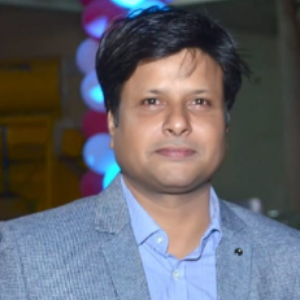Title : Polymer/Ceramic composites a novel material for high K applications
Abstract:
Miniaturization of electronics devices creates a strong desire to place capacitors on the circuit board in the form of integrated passive components. To realize this, lot of research is being carried out by several researchers to develop polymer ceramic composites with high dielectric constant. Need for high dielectric constant materials have been driven by the continuous demand for miniaturization of electronic devices. To fulfil this material with high or giant dielectric constant is required. Recently, CaCu3Ti4O12 (CCTO) has attracted lot of scientific and technological interest because of its giant dielectric constant (εr ~104) with weak temperature/frequency dependence in a wide range of temperature (100–600 K) and frequency. High density, brittleness and challenging processing conditions are few drawbacks which impede its use as high-k materials. So polymer ceramic composites have become a promising material for these applications. As they possess hardness, stiffness and high dielectric constant of ceramics and the flexibility, elasticity and low density of polymers. In the present work, we investigated the structural and dielectric properties of Poly(vinylidene fluoride)/modified CCTO composites.
Extrusion process was used to prepare high dielectric constant ceramic reinforced PVDF composites. The structure and morphology of the composites were characterized using X-ray diffraction and scanning electron microscope. SEM micrographs show that homogeneous distribution of ceramics has taken place in PVDF matrix with small trails of agglomeration. Tensile tests were performed to measure Young’s modulus which increases significantly in composites in presence of ceramic filler. Dielectric measurements were carried out between frequencies 10-2 to 106 Hz using four probe Novocontrol set up (ZG4) from room temp to 120°C. With addition of CCTO there is substantial increase in the dielectric constant of matrix PVDF. Dielectric loss in composite slightly increases in presence of CCTO.
Audience take-away
- Audience may use the information for developing high dielectric constant thin film capacitors.
- Practical knowledge they will learn from the lecture like characterizations techniques, fabrications methods and types of testing, which will definitely help them in getting jobs, teaching and expanding their research. Presently I am supervising M.Tech and Ph.D thesis on different compositions, so collaborative research can also be done. They will learn embedded capacitor technology, which is latest in micro-electronics.



